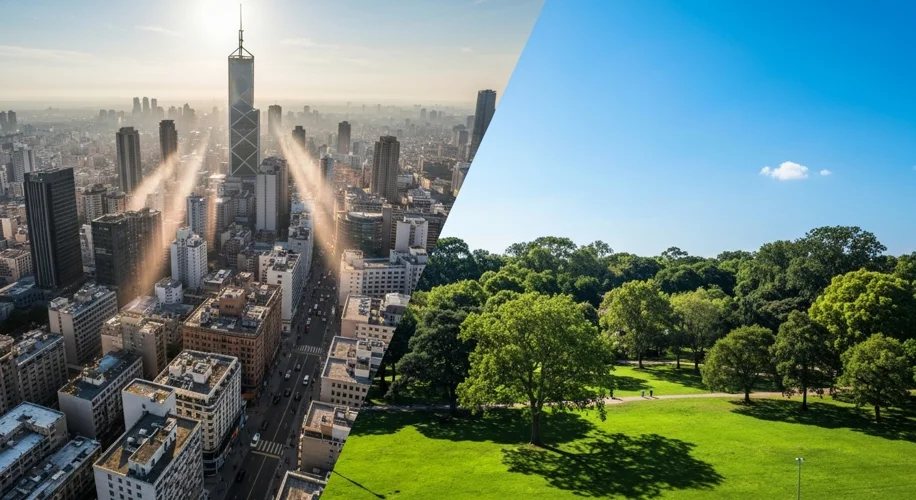Beyond the Weather Report: Decoding the Urban Heat Island Effect
Today, August 3rd, 2025, we’re feeling the summer heat, but have you ever noticed that cities often feel significantly hotter than the surrounding rural areas? This isn’t just your imagination; it’s a well-documented phenomenon called the Urban Heat Island (UHI) effect. As a scientist who has spent years studying climate and its impacts, I find this topic particularly fascinating, especially when considering how it affects our communities.
What Exactly is the Urban Heat Island Effect?
Essentially, the UHI effect describes how metropolitan areas tend to be significantly warmer than their rural surroundings. This difference in temperature can be as much as 5-10 degrees Fahrenheit (2-5 degrees Celsius) or even more during the night. It happens because cities are fundamentally different from natural landscapes.
Think about it: where rural areas have trees, vegetation, and open soil, cities are dominated by surfaces like asphalt, concrete, and buildings. These materials absorb and retain more solar radiation than natural landscapes. During the day, they soak up the sun’s heat, and at night, they slowly release it back into the atmosphere, keeping the urban environment warmer.
Furthermore, the tall buildings in cities can trap heat and reduce wind flow, preventing cooler air from circulating. Human activities, like the heat generated from cars, air conditioning units, and industrial processes, also contribute to the warming.
Why Does This Matter?
The UHI effect isn’t just about feeling a bit more uncomfortable on a hot day. It has real-world consequences, especially for vulnerable populations. Higher temperatures can exacerbate air pollution, leading to increased respiratory problems. It also increases energy demand for cooling, straining power grids and leading to higher utility bills for residents.
For communities living in densely populated urban areas, particularly those with less green space and older infrastructure, the UHI effect can significantly impact quality of life and health. It’s a factor that needs to be considered when we talk about urban planning and creating healthier, more equitable living environments.
Looking Ahead: Greener Cities, Cooler Future
The good news is that we can do something about it. Understanding the UHI effect opens doors to solutions. Increasing green infrastructure, such as planting trees, creating more parks, and implementing green roofs, can help mitigate these elevated temperatures. These natural elements provide shade and release water vapor through evapotranspiration, which has a cooling effect.
Using lighter-colored, reflective materials for roofs and pavements (known as cool pavements and cool roofs) can also reduce heat absorption. Better urban planning that promotes airflow and incorporates sustainable design principles is key to building cities that are more resilient to heat.
By being aware of the Urban Heat Island effect, we can better advocate for and implement strategies that make our cities more livable and sustainable for everyone.

